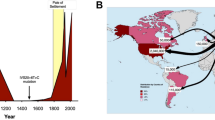Abstract
Sudden death accounts for up to 43% of all deaths in patients with familial dysautonomia (FD). The classic features of FD, namely, autonomic dysfunction, high blood pressure, and blood pressure labiality, are all risk factors for cardiac remodeling and hypertrophy. Myocardial remodeling and hypertrophy are independent risk factors for arrhythmias, cardiovascular events, and sudden death. An extensive review of the medical literature found no documentation of structural heart defects or myocardial remodeling in patients with FD. Sixteen patients with FD underwent physical examination, in-clinic blood pressure measurements, and echocardiographic study. On the basis of the findings, the patients were categorized by left ventricular geometric pattern. Twenty-four-hour ambulatory blood pressure monitoring was recommended to all participants. The majority of FD patients were found to have very high blood pressure values both during in-clinic measurements and during ambulatory blood pressure monitoring. Echocardiographic abnormalities were found in 43.75% of the study group; 18.75% of the study group had concentric hypertrophy, among which severe hypertrophy was found in 2 patients. Unknown previously, cardiac remodeling or hypertrophy is common in FD. We recommend that routine cardiac echocardiography be performed in this population, and attempts to treat high blood pressure should begin earlier in life.




Similar content being viewed by others
References
Axelrod FB (2002) Hereditary sensory and autonomic neuropathies. Familial dysautonomia and other HSANs. Clin Auton Res 12(Suppl 1):12–14
Axelrod FB (2004) Familial dysautonomia. Muscle Nerve 29:352–363
Axelrod FB (2006) A world without pain or tears. Clin Auton Res 16:90–97
Axelrod FB, Goldberg JD, Ye XY et al (2002) Survival in familial dysautonomia: Impact of early intervention. J Pediatr 141:518–523
Bartoletti A (2005) Cardiac pacing in patients with familial dysautonomia—there is nothing simple about sudden death. Clin Auton Res 15:6–9
Dunn FG, Pfeffer MA (1999) Left ventricular hypertrophy in hypertension. N Engl J Med 340:1279–1280
Glickstein JS, Axelrod FB, Friedman D (1999) Electrocardiographic repolarization abnormalities in familial dysautonomia: an indicator of cardiac autonomic dysfunction. Clin Auton Res 9:109–112
Gold-von Simson G, Axelrod FB (2006) Familial dysautonomia: update and recent advances. Curr Probl Pediatr Adolesc Health Care 36:218–237
Gold-von Simson G, Rutkowski M, Berlin D et al (2005) Pacemakers in patients with familial dysautonomia—a review of experience with 20 patients. Clin Auton Res 15:15–20
Henry WL, Gardin JM, Ware JH (1980) Echocardiographic measurements in normal subjects from infancy to old age. Circulation 62:1054–1061
Hilz MJ, Kolodny EH, Neuner I et al (1998) Highly abnormal thermotests in familial dysautonomia suggest increased cardiac autonomic risk. J Neurol Neurosurg Psychiatry 65:338–343
Kampmann C, Wiethoff CM, Wenzel A et al (2000) Normal values of M mode echocardiographic measurements of more than 2000 healthy infants and children in central Europe. Heart 83:667–672
Kannel WB, Cupples LA, D’Agostino RB et al (1988) Hypertension, antihypertensive treatment, and sudden coronary death. The Framingham Study. Hypertension 11:II45–II50
Kimura E, Tabata T, Tanaka H et al (2005) Left ventricular geometry and myocardial contractility in patients with essential hypertension evaluated by myocardial velocity profile. J Am Soc Echocardiogr 18:1222–1229
Lang RM, Bierig M, Devereux RB et al (2005) Recommendations for chamber quantification: a report from the American Society of Echocardiography’s Guidelines and Standards Committee and the Chamber Quantification Writing Group, developed in conjunction with the European Association of Echocardiography, a branch of the European Society of Cardiology. J Am Soc Echocardiogr 18:1440–1463
Lang RM, Bierig M, Devereux RB et al (2006) Recommendations for chamber quantification. Eur J Echocardiogr 7:79–108
Lehavi O, Aizenstein O, Bercovich D et al (2003) Screening for familial dysautonomia in Israel: evidence for higher carrier rate among Polish Ashkenazi Jews. Genet Test 7:139–142
Levy D, Garrison RJ, Savage DD et al (1990) Prognostic implications of echocardio-graphically determined left ventricular mass in the Framingham Heart Study. N Engl J Med 322:1561–1566
Maule S, Milan A, Grosso T et al (2006) Left ventricular hypertrophy in patients with autonomic failure. Am J Hypertens 19:1049–1054
McLenachan JM, Henderson E, Morris KI et al (1987) Ventricular arrhythmias in patients with hypertensive left ventricular hypertrophy. N Engl J Med 317:787–792
Messerli FH (1999) Hypertension and sudden cardiac death. Am J Hypertens 12:181S–188S
Nussinovitch N, Nussinovitch M, Peleg E et al (2005) 24-hour ambulatory blood pressure monitoring in children with familial dysautonomia. Pediatr Nephrol 20:507–511
Nussinovitch U, Katz U, Nussinovitch M, Nussinovitch N (2009) Late ventricular potentials and QT dispersion in familial dysautonomia. Pediatr Cardiol [Epub ahead of print]. 10.1007/s00246-009-9419-0
Pickering TG, James GD (1994) Ambulatory blood pressure and prognosis. J Hypertens 12:S29–S33
Pierdomenico SD, Lapenna D, Bucci A et al (2004) Prognostic value of left ventricular concentric remodeling in uncomplicated mild hypertension. Am J Hypertens 17:1035–1039
Pierdomenico SD, Lapenna D, Di Tommaso R et al (2006) Blood pressure variability and cardiovascular risk in treated hypertensive patients. Am J Hypertens 19:991–997
Rials SJ, Wu Y, Ford N et al (1995) Effect of left ventricular hypertrophy and its regression on ventricular electrophysiology and vulnerability to inducible arrhythmia in the feline heart. Circulation 91:426–430
Riley CM, Day RL, Greely D, Langford WS (1949) Central autonomic dysfunction with defective lacrimation. Pediatrics 3:468–477
Schiller NB, Shah PM, Crawford M et al (1989) Recommendations for quantitation of the left ventricle by two-dimensional echocardiography. American Society of Echocardiography Committee on Standards, Subcommittee on Quantitation of Two-Dimensional Echocardiograms. J Am Soc Echocardiogr 2:358–367
Sorof JM (2002) Prevalence and consequence of systolic hypertension in children. Am J Hypertens 15:57S–60S
Verdecchia P, Angeli F, Gattobigio R et al (2007) Impact of blood pressure variability on cardiac and cerebrovascular complications in hypertension. Am J Hypertens 20:154–161
Wolk R (2000) Arrhythmogenic mechanisms in left ventricular hypertrophy. Europace 2:216–223
Acknowledgments
We wish to thank Gloria Ganzach and Phyllis Curchack Kornspan for their editorial assistance. This study was conducted in the memory of Haim Giron.
Author information
Authors and Affiliations
Corresponding author
Rights and permissions
About this article
Cite this article
Nussinovitch, U., Katz, U., Nussinovitch, M. et al. Echocardiographic Abnormalities in Familial Dysautonomia. Pediatr Cardiol 30, 1068–1074 (2009). https://doi.org/10.1007/s00246-009-9497-z
Received:
Revised:
Accepted:
Published:
Issue Date:
DOI: https://doi.org/10.1007/s00246-009-9497-z




